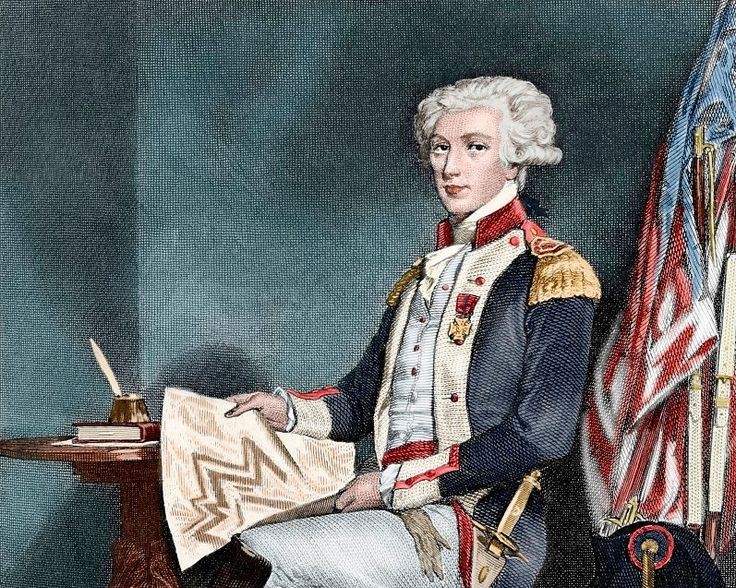July 4, 1917, Paris, France: The War to End All Wars is raging, and Col. Charles E. Stanton is at the tomb of the Marquis de Lafayette giving a speech praising France for helping the USA win the Revolutionary War. He ends it with a phrase that brings the crowd to its feet:
“Lafayette, nous voilà” (Lafayette, we are here).
Armistice Day marked the end of the war and came 16 months later, on the 11th hour of the 11th day of the 11th month of 1918. Today marks the 103rd anniversary of the end of what came to be known as World War I, the ugliest conflict the world had ever seen. It taught us about poison gas and trench warfare and trench foot and cigarettes and hinky-dinky parlez vous.
My Great Uncle Harry Nixon was shot and gassed on the battlefields of France and was never the same when he came home. My grandfather Ralph Bean was a musician who lucked out with a gig playing cornet in the Navy Band and taught me to sing “Goodbye Ma Goodbye Pa, Goodbye mule with the old hee-haw,” but not the Hinky Dinky Parlez Vous song, which involved a certain Mademoiselle from Armentieres who was fond of soldiers.
Sadly, The War to End All Wars was to set the stage for an even more terrible war a couple of decades later that provided thousands more heroes to remember and would be followed by a long string of undeclared conflicts. Armistice Day became Veterans Day in 1954, a day to remember our debt to all veterans.
One of the worthiest American heroes wasn’t an American.
Marie-Joseph Paul Yves Roch Gilbert du Motier, the Marquis De Lafayette was a rich and high-born Frenchman who was in love with liberty and loathed the British so much that he pestered American Ambassador to France Benjamin Franklin to help get him get appointed to the Continental Army. Lafayette was only 19 but was born into a military-minded family and had been trying to become a soldier since he was 13. It didn’t take much cajoling, since Franklin’s job was to persuade the French to take up arms against the British and the advantage of having Lafayette on our side was obvious.
So, the young French nobleman secured a commission as a major general and boarded a ship bound for Philadelphia (a voyage that took an average of seven weeks, depending on the winds). He presented his credentials to the Continental Congress and met with General George Washington. It was love at first sight. The gregarious young Frenchman’s own father had been killed fighting the English in the Seven Years War when Lafayette was 2. The reserved American general, who had no children of his own, took an instant liking to Lafayette, who proved himself as an officer almost immediately when he rallied panicking troops at Brandywine Creek despite being shot in the thigh. The General instructed the surgeons to treat him “as though he were my own son.”
Lafayette served with distinction and proved to be indispensable. He worked tirelessly to bring his country into the war, was a brilliant strategist, a fearless soldier, a principled leader and, when the surrender came, a first-class 18th Century troll.
His countrymen, led by another nobleman, Gen. Marshal Jean-Baptiste Rochambeau, helped dispatch the British once and for all (or at least until the War of 1812) at the Siege of Yorktown. On October 19, 1781, the allies assembled in an open field to accept the British surrender.
Things did not go exactly to form. British General Charles Cornwallis was so angry at losing to the ragtag Americans that he boycotted it and appointed a subordinate to surrender his ceremonial sword. His troops followed Cornwallis’s lead and refused to even look at the assembled Americans as they marched onto the surrender field to the tune of “When the King Enjoys His Own Again” (some say they were playing “The World Turned Upside-down,” which seems unlikely, since that was an anti-monarchist ditty sung to the same tune as the monarchist version), they turned their faces toward the French.
Lafayette wasn’t about to put up with this blatant disrespect. He signaled the American fife and drum corps to play Yankee Doodle.
And they did. They played the tune that had been invented to ridicule them, and drowned out their arrogant, defeated foes, who sullenly tossed their muskets on the ground as they went through the motions of surrender.
Lafayette returned to his home and named his firstborn son Georges Washington Louis Gilbert de Lafayette. He worked for representational government and wrote The Declaration of the Rights of Man and of the Citizen, the core statement of the French Revolution, in consultation with Thomas Jefferson.
He tried to push his American friends to abolish slavery, without much success, and bought a plantation in the Indies with the intention of freeing the enslaved people who worked it. Those efforts were derailed by the ascension of Robespierre, whose government confiscated Lafayette’s property and forced him to flee to Austria, where he was imprisoned for five years.
He grew disillusioned with his adopted country and told English abolitionist Thomas Clarkson, “I would never have drawn my sword in the cause of America, if I could have conceived that thereby I was founding a land of slavery.”
Nevertheless, his love for America abided, and he made two more visits – once in 1784, to visit his friend and mentor George Washington, and another in 1824, when President James Monroe invited him to help celebrate the country’s 50th anniversary. He toured all 24 states and was feted from New England to the Carolinas. He died on May 20, 1834, and his tomb sits on a layer of American soil brought from Bunker Hill. Forty-four American cities and counties have been named for him.
Watch a dramatization of the British surrender at Yorktown here. And yet more here.
Betty Bean writes a Thursday opinion column for KnoxTNToday.com.

